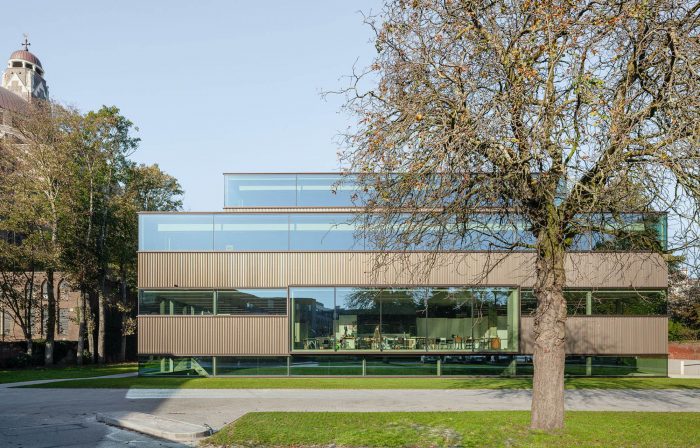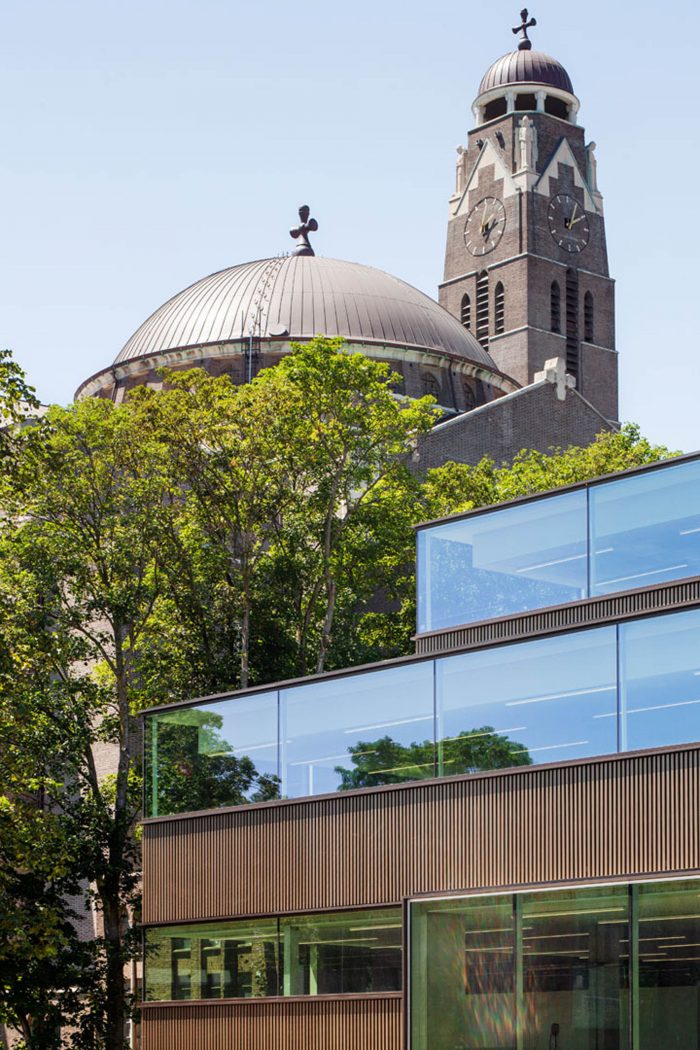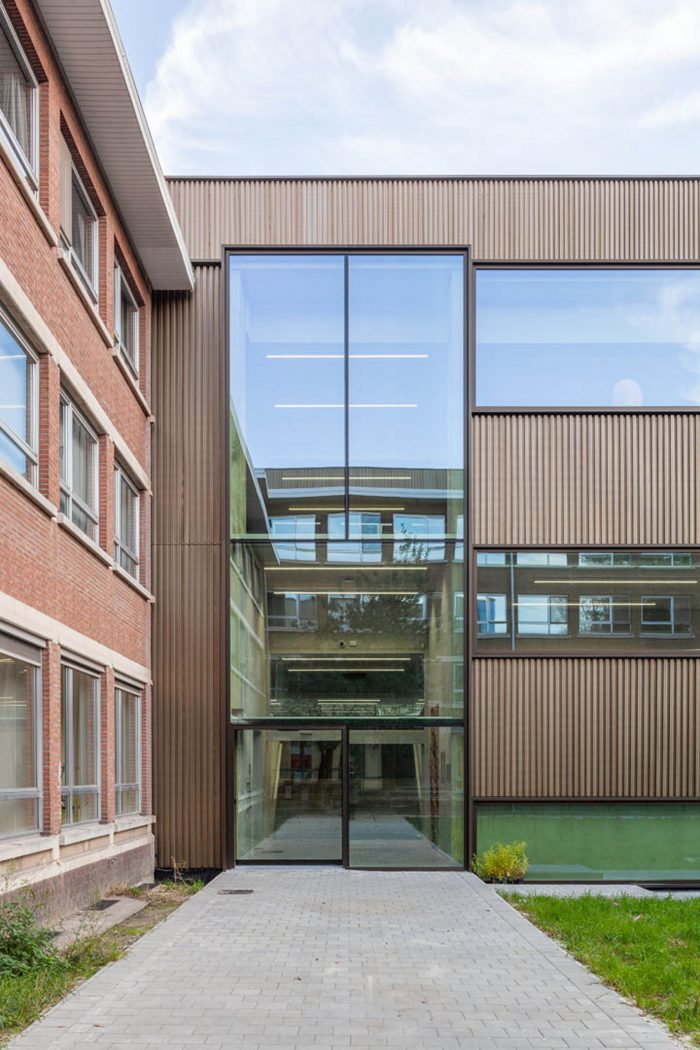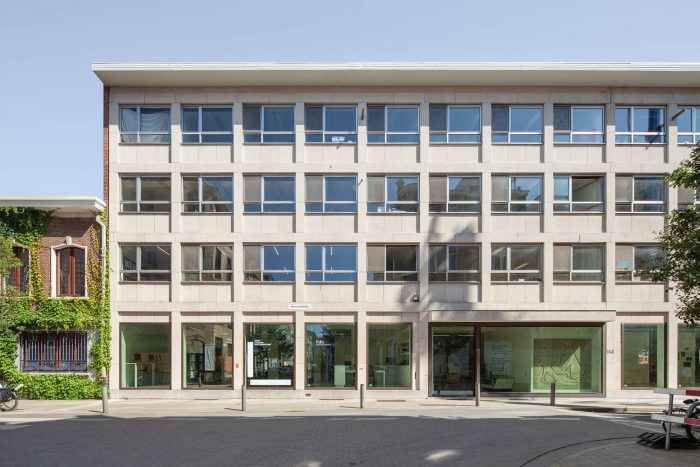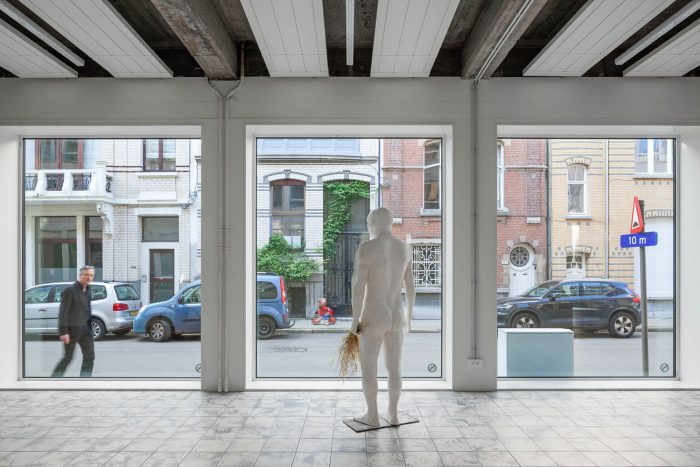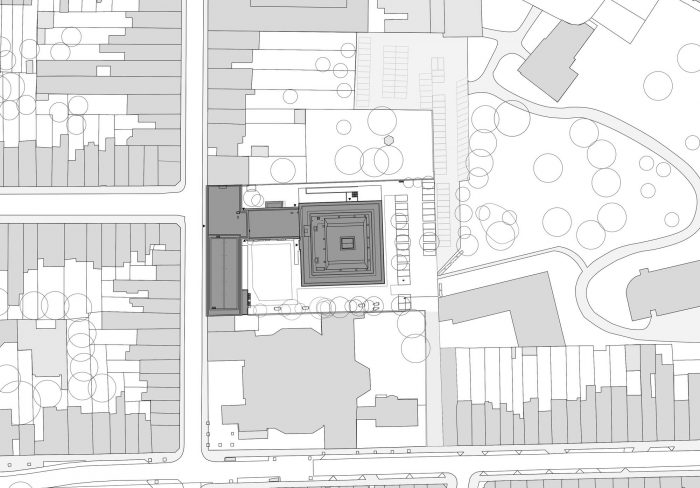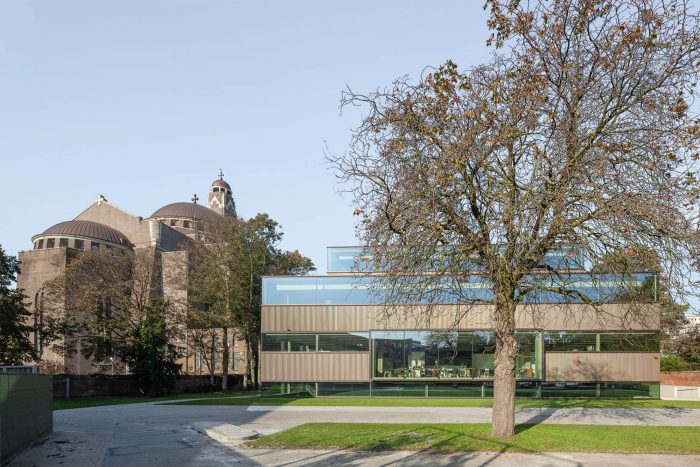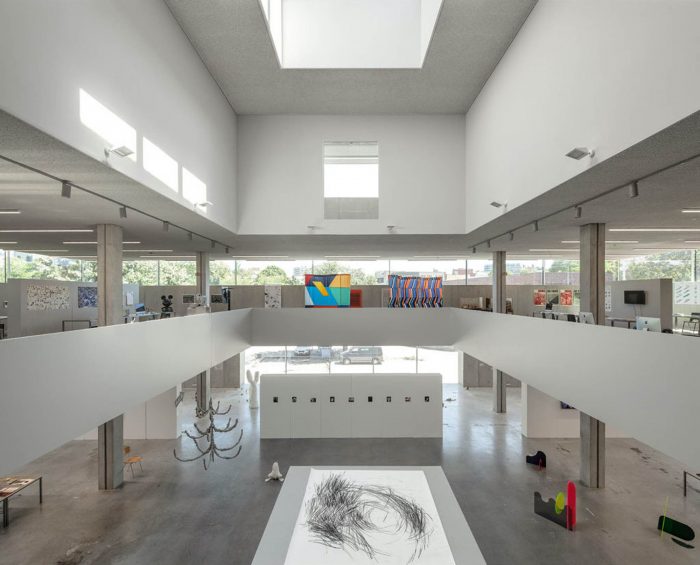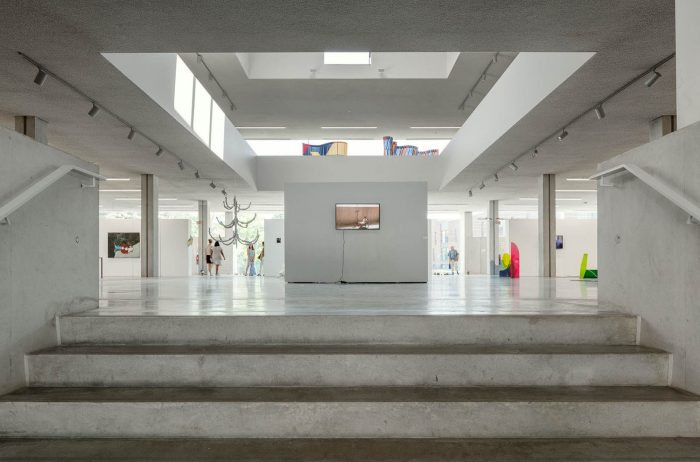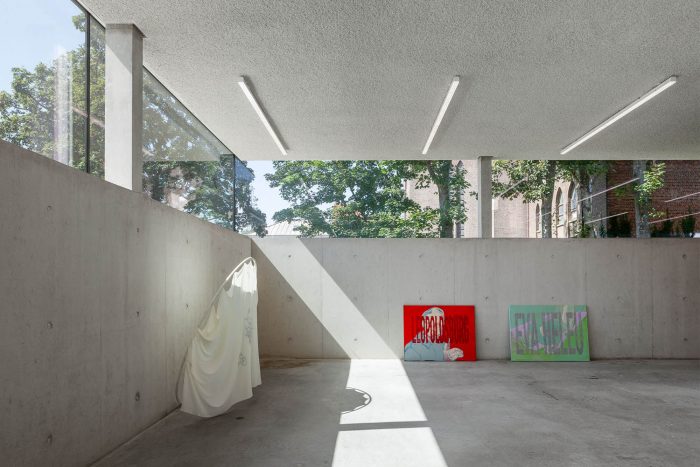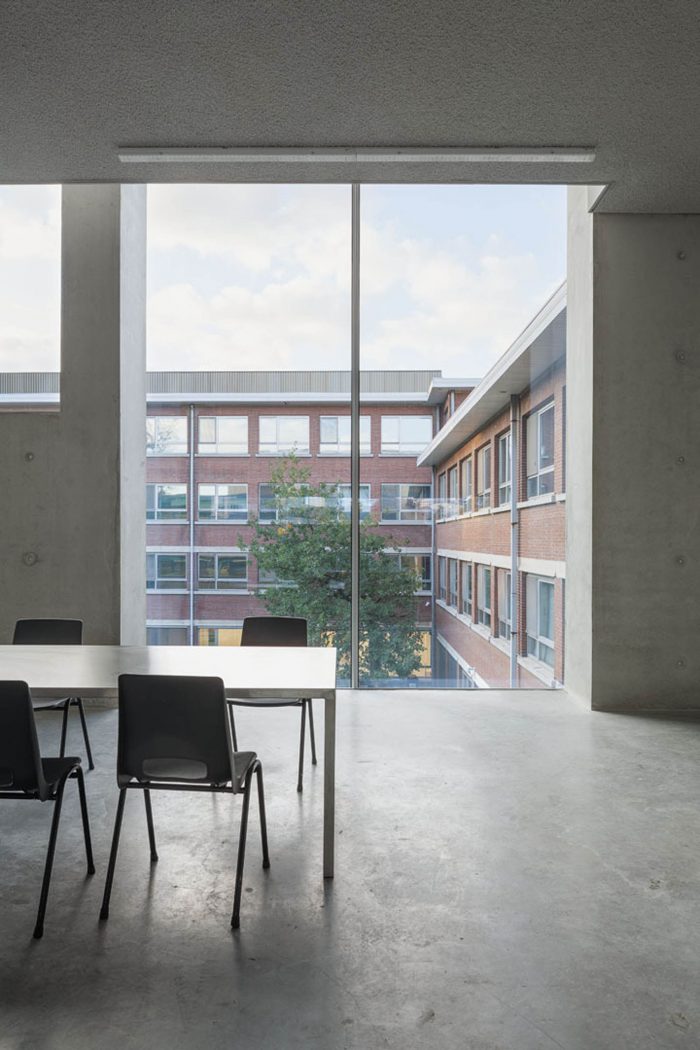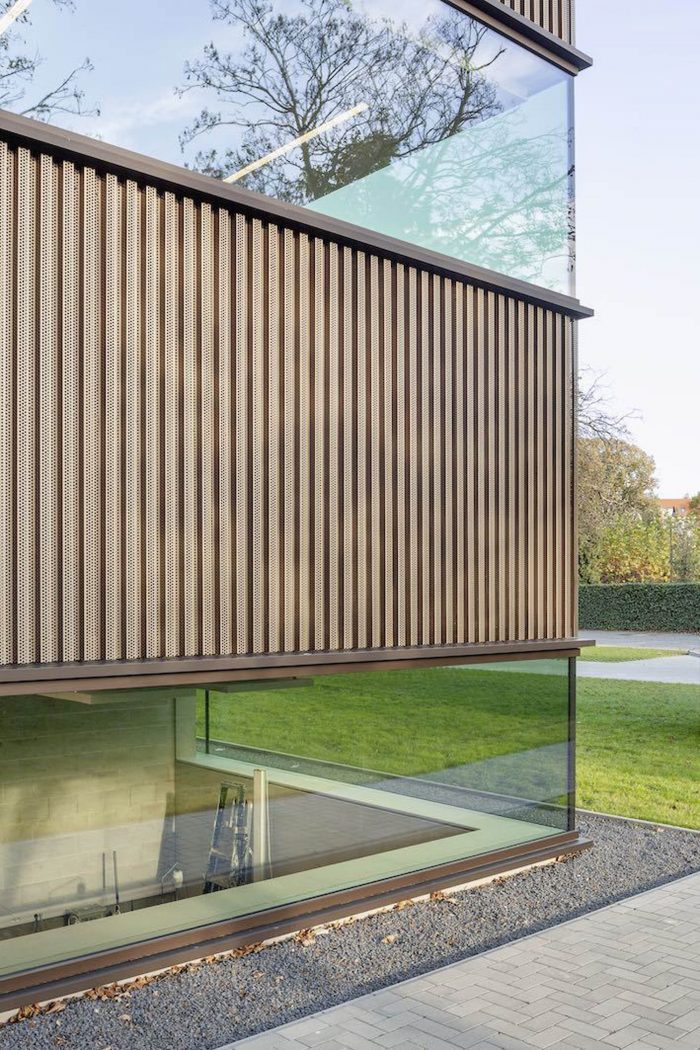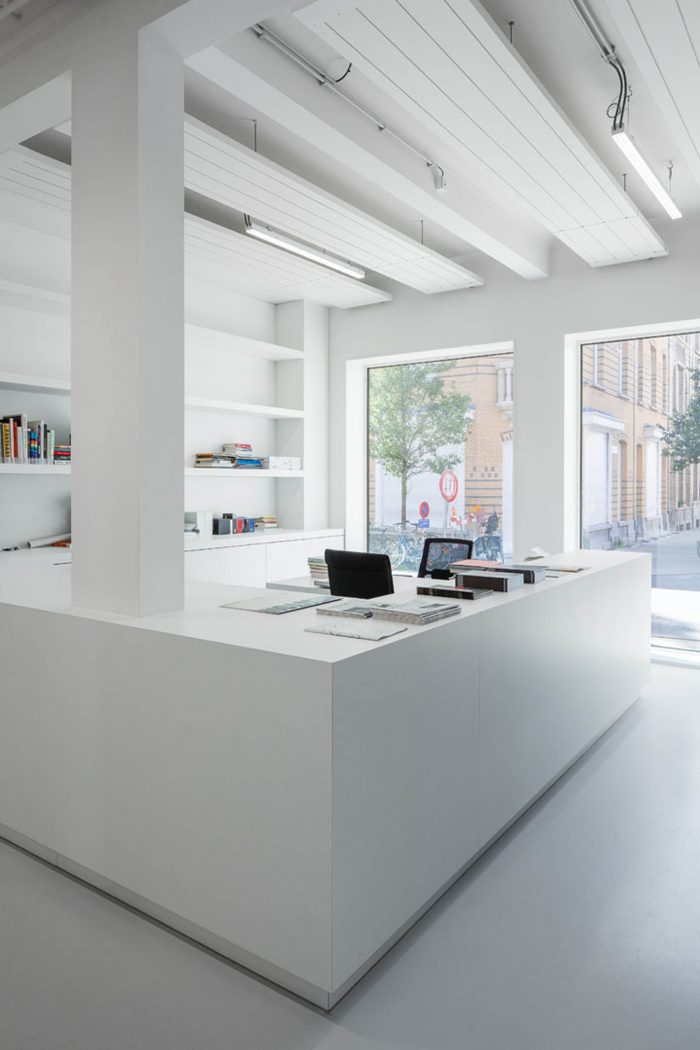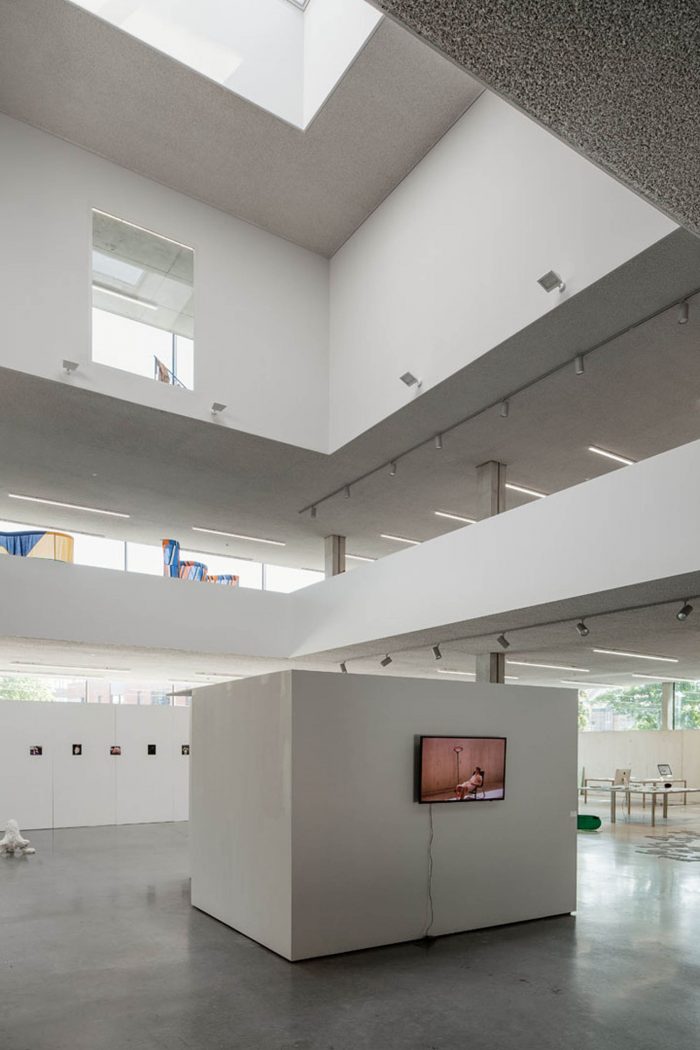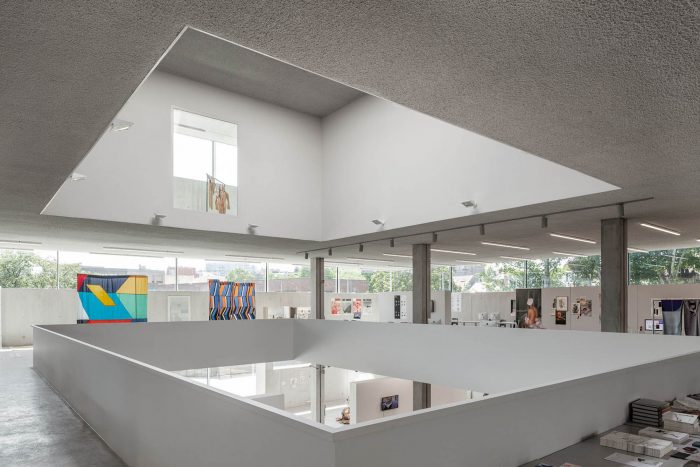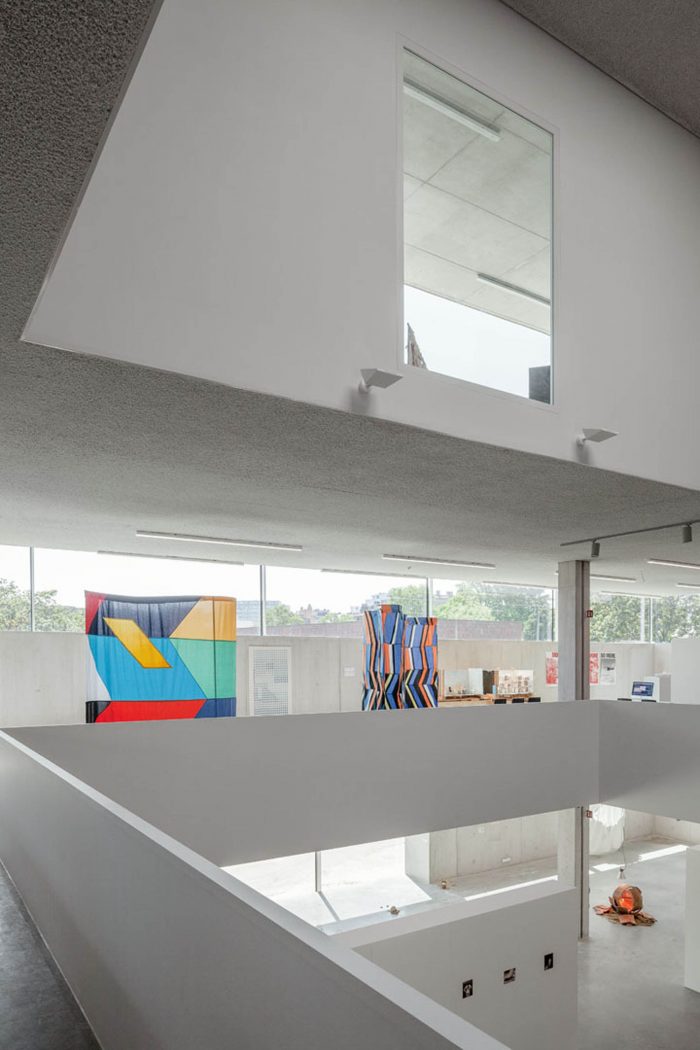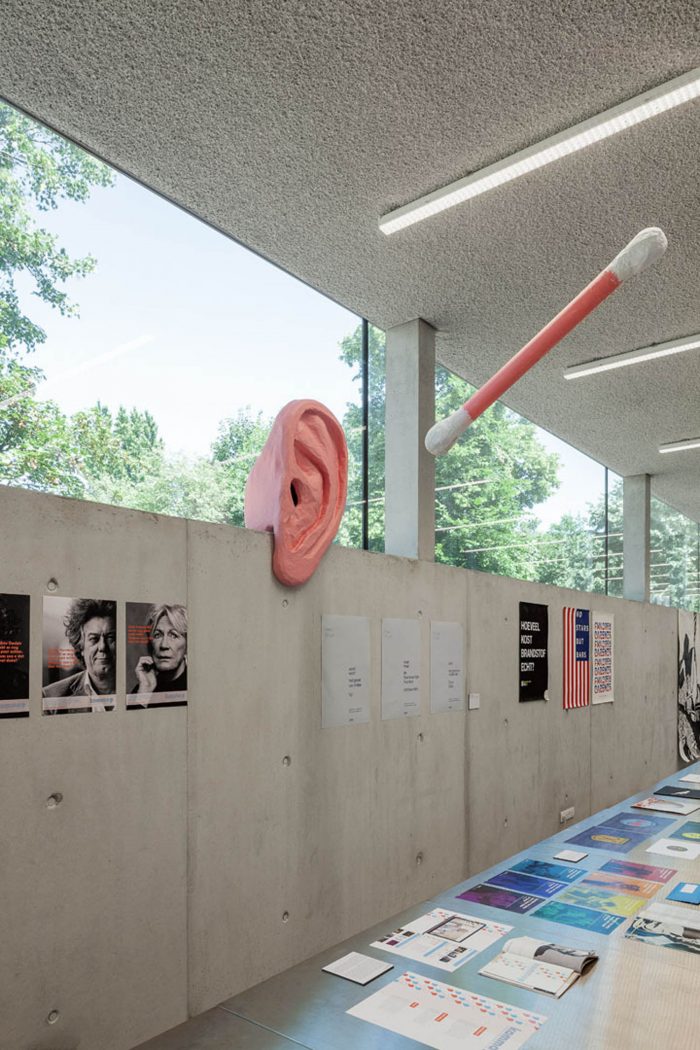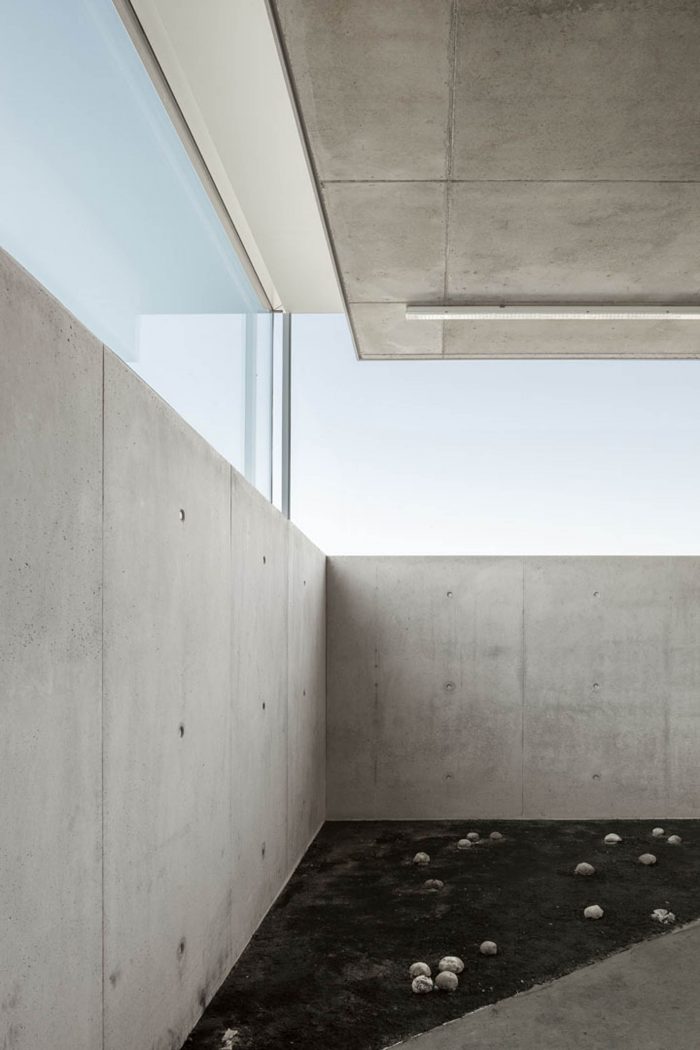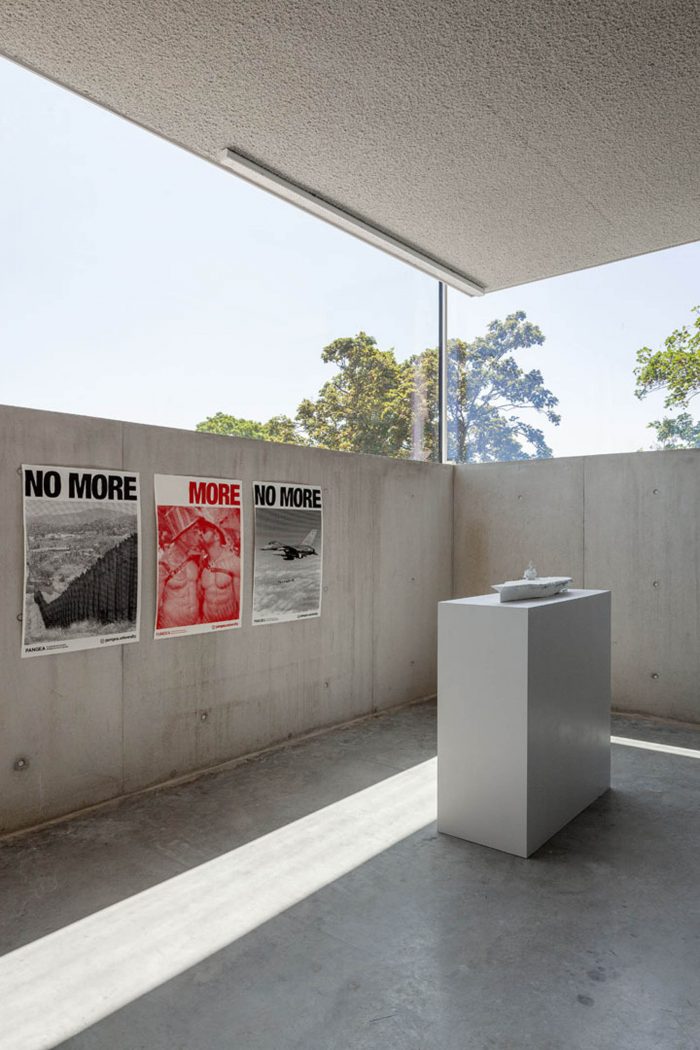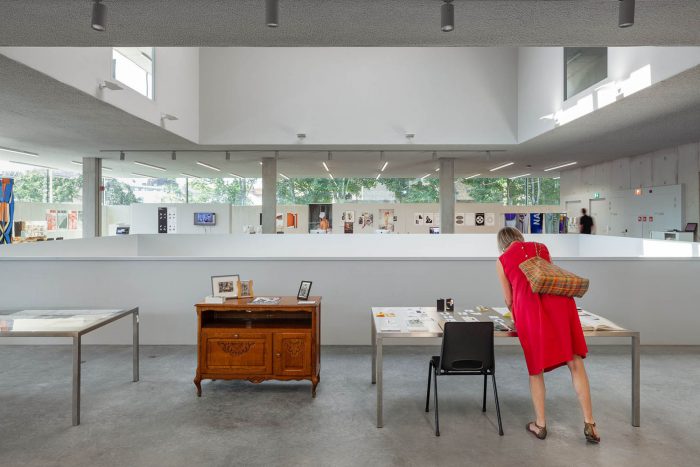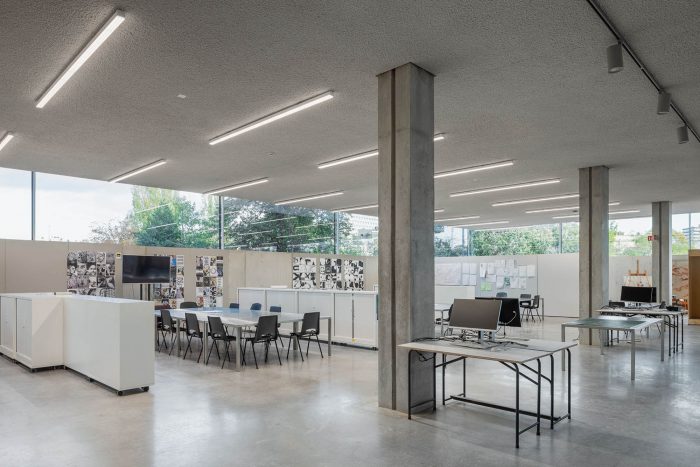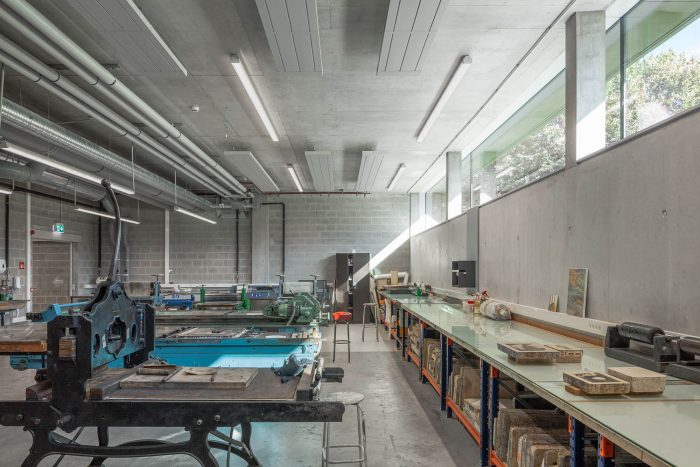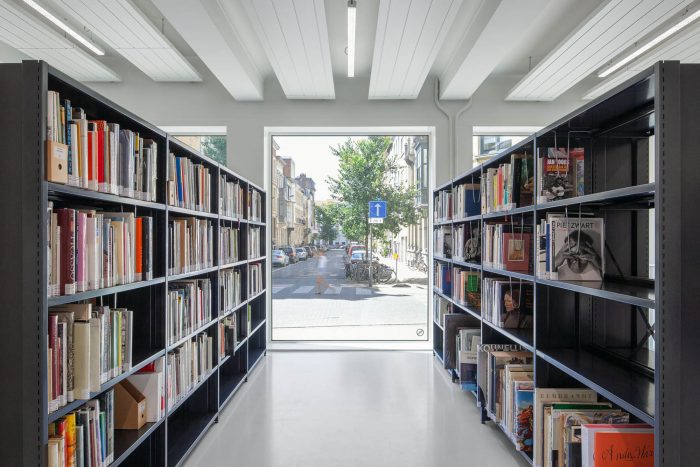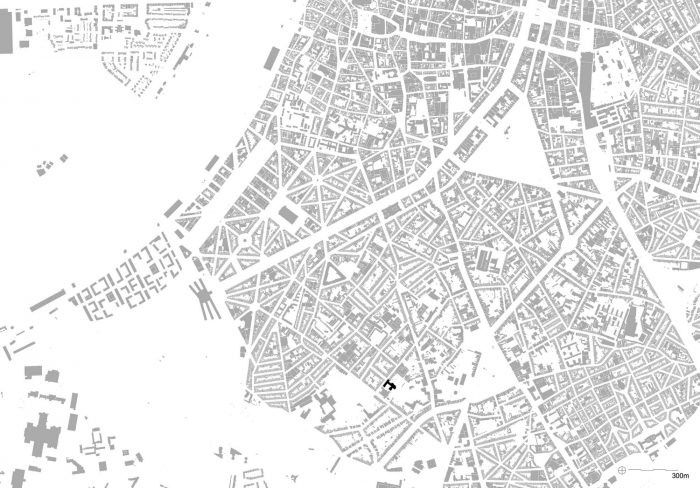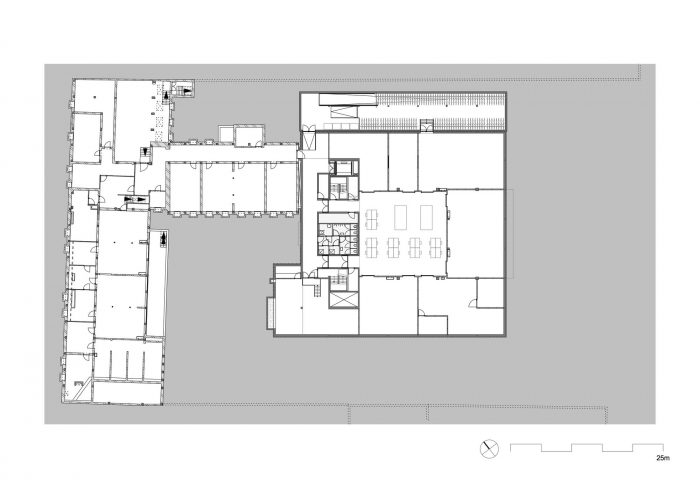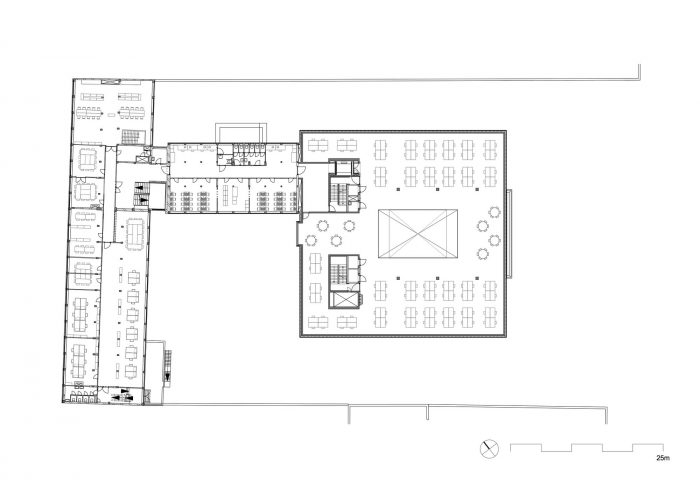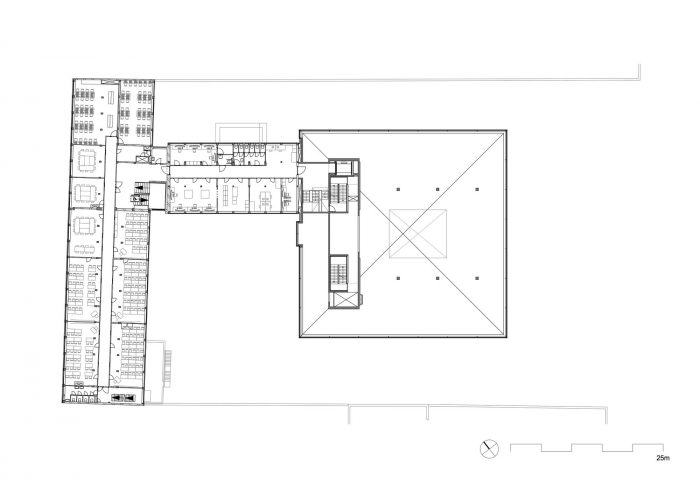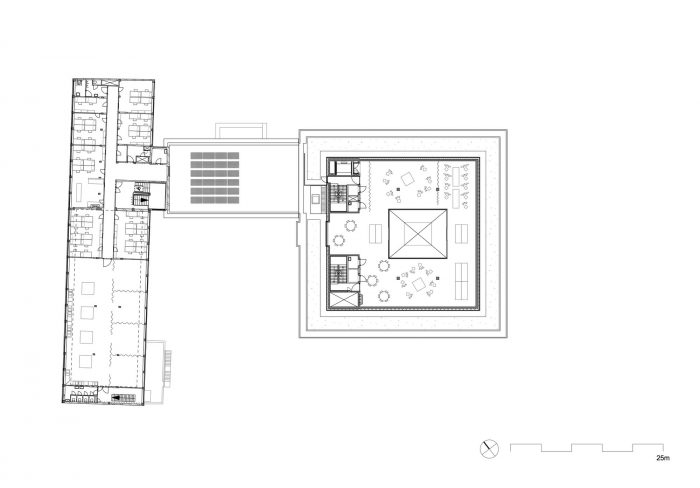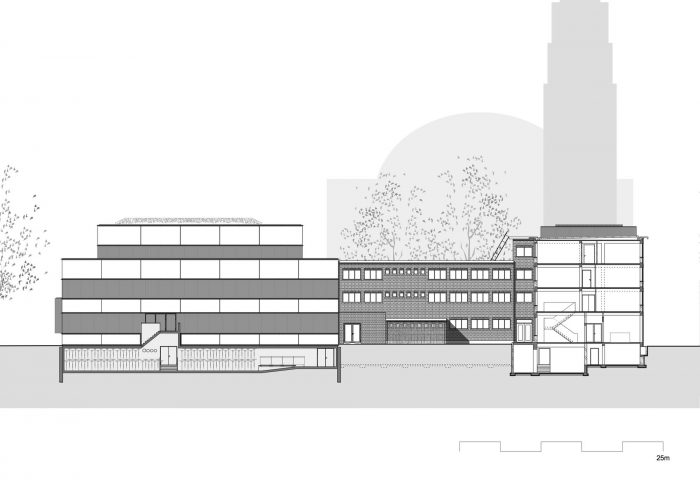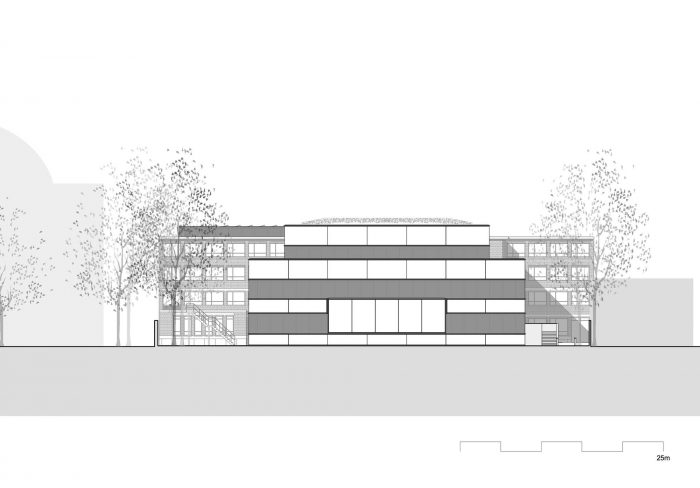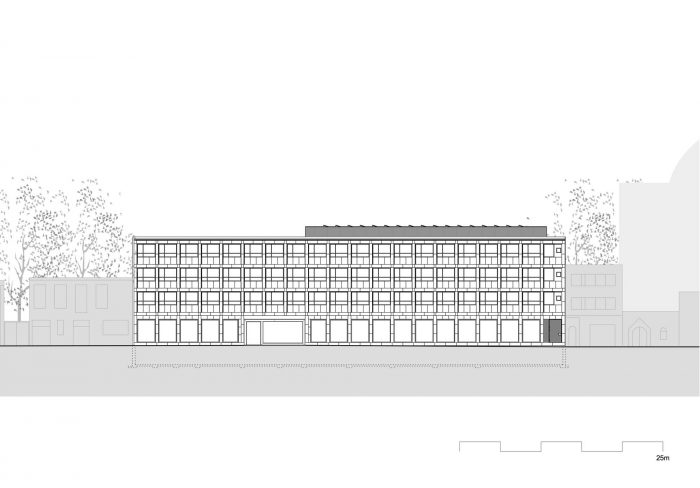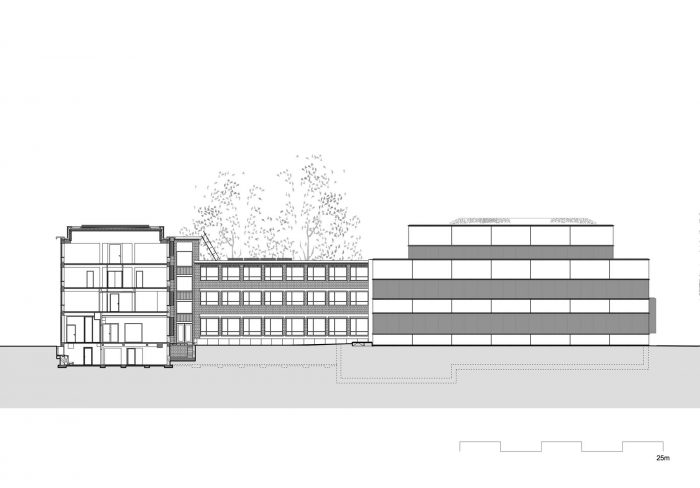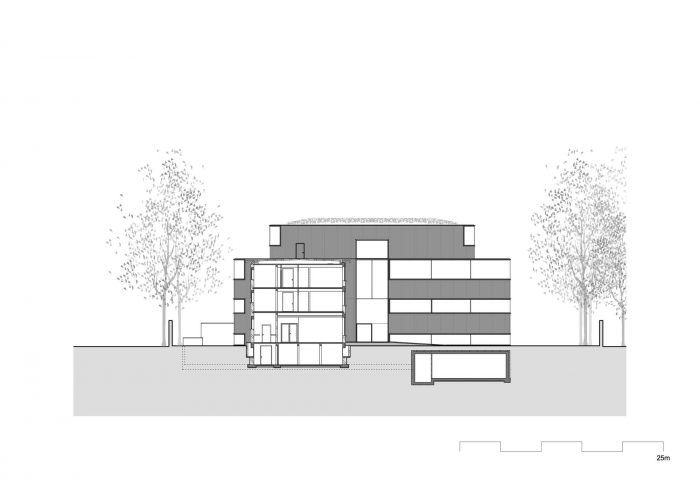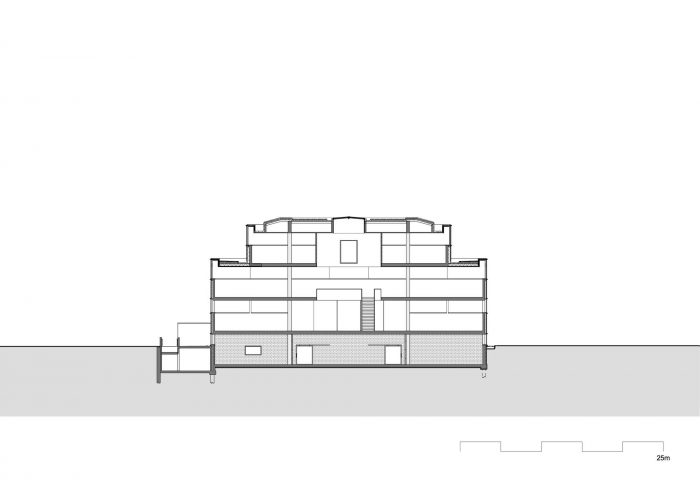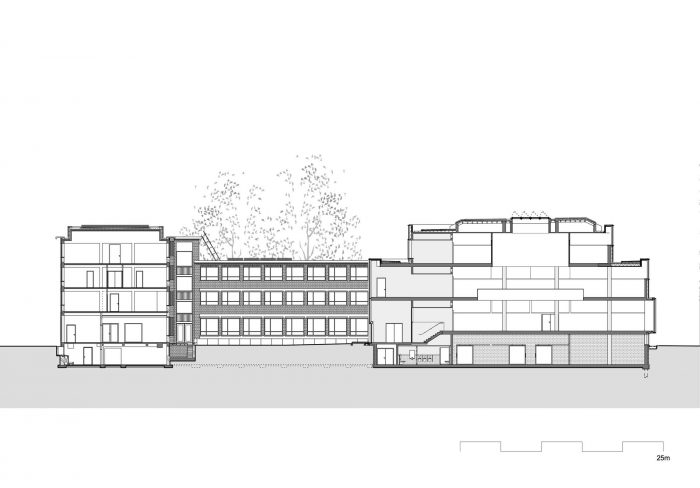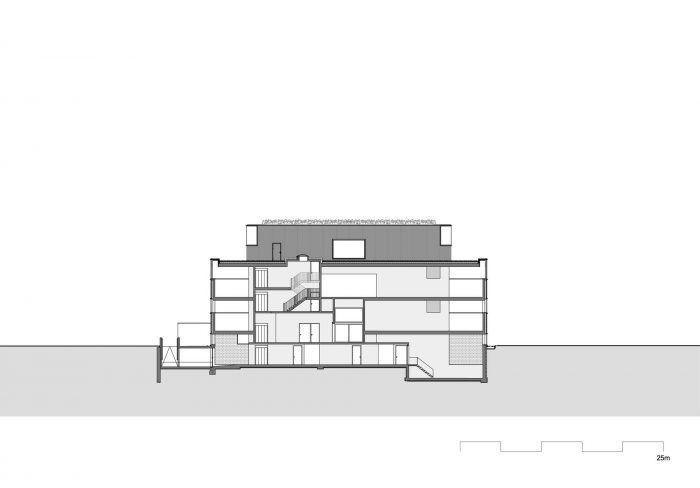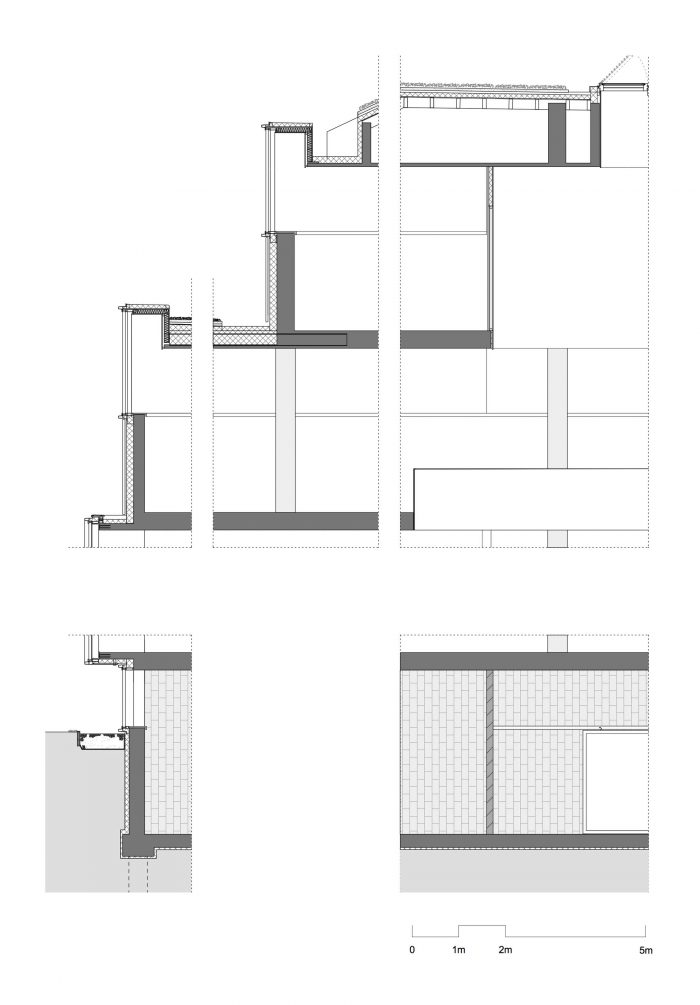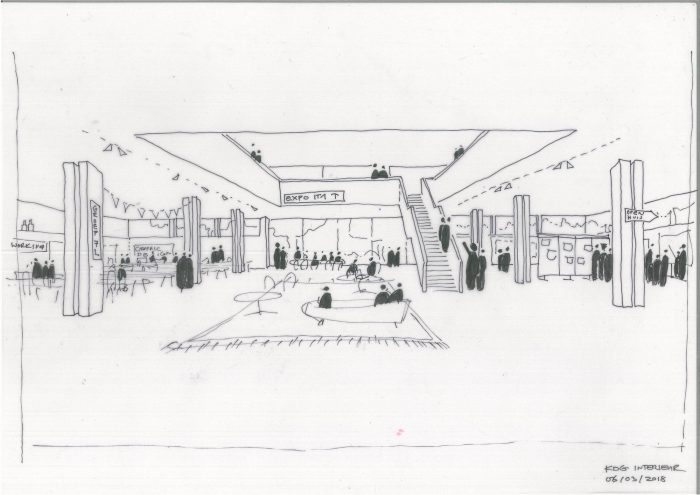在安特卫普的圣卢卡斯艺术学校的案例中,Atelier Kempe Thill面对的是一个非常低的建筑预算作为起点。 此外,客户要求一个复杂的空间计划,必须将部分空间整合到现有建筑中。 为了管理需求的减少,各个层面的优化和一般的极简主义是主要的设计标准。新房子是与学院的不同用户合作开发的,为艺术教育创造了现代条件。目的是利用新的建筑作为一种手段来重新组织教育过程以及学院本身,为迎接21世纪的挑战做好准备。
In the case of the St. Lucas school of arts in Antwerp, Atelier Kempe Thill was confronted with a very low building budget as a starting point. In addition, the client asked for a complex space program that had to be partly integrated into an existing building. In order to manage the reduction of the demands, optimisation on various levels and general minimalism have been major design criteria. The new house has been developed in collaboration with the various users of the institute to create contemporary conditions for education in arts. The aim was to use the new building as a means to re-organise the education process as well as the institute itself, to prepare it for the challenges of the 21st century.
设计的出发点是对20世纪50年代末的一所护士学校进行改造。这座舒适的建筑在使用了近60年后仍然保持着良好的状态,但却只能提供小而不灵活的教室,这对于现代艺术教育和艺术创作来说是不合适的条件。由于预算不允许完全拆除现有的房屋,Kempe Thill工作室决定采取部分再利用、部分改造和部分拆除的组合策略,为学院的实质性新扩建腾出空间。沿街的主楼和侧翼被保留,而花园一侧的两个较小的礼堂被拆除。
The starting point of the design was the transformation of an existing nursing school from the late 1950s. The pleasant building was still in good shape after almost 60 years of use but offered only small and inflexible classrooms which are inadequate conditions for contemporary art education and art production. As the budget did not allow for complete demolition of the existing house, Atelier Kempe Thill decided to go for a combined strategy of part re-use, part transformation and part demolition to make space for a substantial new extension of the institute. The main building along the street and the side-wing were maintained, while the two smaller auditoria on the garden side were demolished.
改造主要集中在现有护理学院的底层。为了使学校更具公共性,几乎所有非承重和部分承重的墙体都被拆除,以实现更加突出和灵活的空间。通过引入新的大窗户,朝向街道的立面被打开,在街道和学校之间形成了强烈的视觉互动。
The transformation focused mainly on the ground floor level of the existing nursing school. In order to give the school a more public character, nearly all non-loadbearing and partially load-bearing walls have been removed to realise more prominent and flexible spaces. The facade towards the street has been opened up by the introduction of new large windows to create a strong visual interaction between the street and the school.
公共艺术图书馆和展览馆等功能被放置在沿街立面,以最大限度地提高与公众和城市的互动。作为社区中心的学生餐厅已经在中央侧翼实现,与绿色庭院和入口大厅形成了视觉联系。此外,一个重要的摄影棚被放置在现有学校的屋顶上。为了创建工作室,现有的屋顶必须被部分拆除,以确保更高和更灵活的空间,并必须增加一个新的辅助建筑。
Functions like the public art library and an exhibition hall have been placed along the street facade to maximise interaction with the public and the city. A student restaurant, serving as a community hub, has been realised in the central side wing, creating a visual connection with the green courtyard and the entrance hall. Additionally, a significant photo studio was placed on the roof of the existing school. To create the studio, the existing roof had to be partly removed to ensure higher and more flexible spaces, and a new secondary construction had to be added.
新的工作室房屋。在现有学校的花园一侧,以工作室房屋的形式进行了大规模的扩建,为学院提供了更灵活、更有灵感的工作室空间。这个新的、相对较大的体量必须敏感地融入20世纪早期建筑群的现有城市结构中。因此,建筑体量部分下沉到地面,以避免它变得太高,新体量的最后一层有一个很大的后移,以减少新房子的视觉影响。
New atelier house. On the garden side of the existing school, a substantial new extension in the form of an atelier house helped offer the institute more flexible and inspiring studio spaces. The new, relatively big, volume had to be implemented sensitively into the existing urban fabric of the early 20th century building block. Consequently, the building volume is partly sunken into the ground to avoid it becoming too high and the last floor of the new volume has a substantial set-back to reduce the visual impact of the new house.
开放式玻璃幕墙的工作室试图显得相当轻盈,并通过黄铜阳极氧化金属外墙,寻求与纪念性的Sint Laurentius教堂和周围其他砖结构建筑的对话。约34米×34米的紧凑体积由四层楼组成,自由高度为3.75米。地下室拥有良好的日照条件,是车间、印刷室和珠宝生产的场所。一楼和一楼是艺术家的工作室,由一个12米高的约8米×13米的空隙连接,由一个大的中央天窗照明。在二楼,人们可以找到学院提供的绘画教育项目的空间。
The atelier with its open glass facades tries to appear rather light and is in search, with its brass-anodized metal facade, for a dialogue with the monumental Sint Laurentius church and other brick buildings in the close surroundings. The compact volume of approximately 34m x 34m consists of four floors of 3,75m free height. The basement with its excellent daylight conditions, houses workshops, printing rooms, and spaces for jewel production. The ground floor and the first floor are used as studio spaces for artists and are connected by a 12m high void of approx. 8m x 13m that is lit by a big, central skylight. On the second floor, one can find spaces for the drawing education program offered by the institute.
一个新型的艺术学校。这个项目可以被看作是对未来艺术学校讨论的一个有趣的贡献。凭借其开放的平台,学校支持更多不同层次的合作工作方法,为未来提供巨大的灵活性,并激发出意想不到的艺术表达。开放式图书馆和常设展览空间支持了建筑的公共性,它们都与公共空间直接互动。
A new type of art school. The resulting project can be seen as an interesting contribution to the discussion about the future of art schools. With its open plateaus, the school is supporting more collaborative working methods on various levels, offering enormous flexibility towards the future, and stimulating unexpected expressions of art. The public character of the building is supported by the open library and the permanent exhibition space, which both interact directly with the public space.
建筑师:Atelier Kempe Thill
年份:2020年
摄影:ULRICH SCHWARZ
城市:ANTWERPEN
国家:比利时
Architects: Atelier Kempe Thill
Year: 2020
Photographs: ULRICH SCHWARZ
City: ANTWERPEN
Country: Belgium


